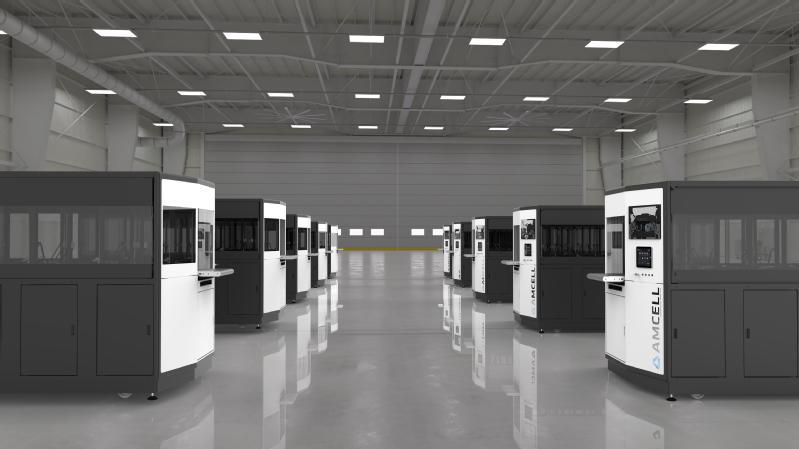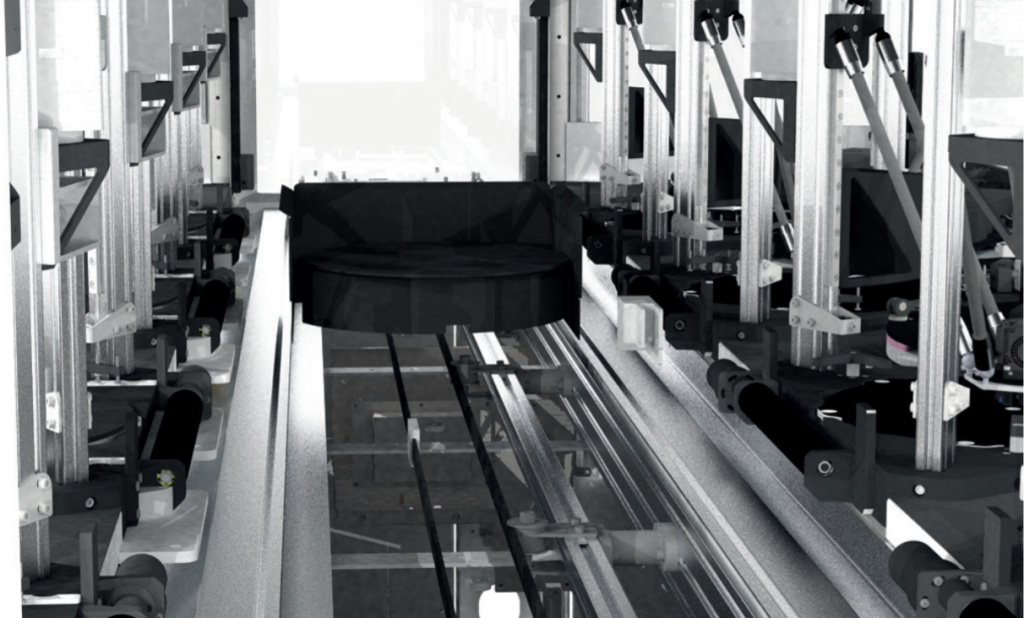Spanish 3D printer manufacturer Triditive has announced the closure of a €5 million pre-Series A funding round.
Led by an investor Triditive describes as ‘an important Spanish industrial group,’ the initiative has seen the company takes its total raised up to around €8 million. Using its additional funding, the firm plans to ramp up the development of its modular AMCELL 3D printer, with the aim of establishing it as a technology capable of facilitating a “rapid response to a supply chain crisis.”
Triditive’s AMCELL development drive
Based in the Spanish city of Gijón, Triditive is a firm whose offering mainly revolves around its proprietary AMCELL 3D printers. Comprising eight robotic modules, each featuring a 220 x 330mm build volume, the systems can be operated independently but simultaneously to churn out parts 24/7 via the firm’s AMD (Automated Multimaterial Deposition) technology.
Leveraging AMD, essentially a combination of binder jetting and fused deposition modeling, the modules enable the creation of components from a mixture of polymers, composites and metals. Both versions of Triditive’s AMCELL, the 1400 and 8300, also have automation subsystems, capable of not only calibrating each module, but ejecting parts onto a conveyor, ready for collection.
Thus far, the firm has gained significant backing to accelerate its machines’ development, including a $1.8 million funding round last year, which was supported by Stanley Ventures, Techstars, Hunosa Empresas, Fourth Funding and IDEPA.
Utilizing some of the investment it has raised over the years, Triditive has built a 20,000 square foot factory in Northwestern Spain. Designed to be the biggest of its kind in the country, the facility is said to be lined with AMCELL systems connected via the company’s EVAM solution, a cloud-based software that offers part tracking, order optimization and even quality assurance functionality.

Advancing metal 3D printing’s adoption
In addition to expanding its facilities, Triditive has also sought to advance the AMCELL’s development via a series of partnerships. Back in 2019, the firm announced plans to work with Elnik Systems, in a move that enabled it to source MIM debinding furnaces and tools for ‘SCALADD,’ an additive manufacturing center providing high-throughput turnkey services.
Established with the aim of expanding the adoption of metal 3D printing, the consortium includes the University of Las Palmas de Gran Canaria (ULPGC), the MediaLab of the University of Oviedo, and the ECRIMESA Group.
As well as being fitted with several AMCELL systems, the SCALADD facility is said to house training initiatives being carried out by both the ULPGC and Oviedo University. Through these programs, covering areas such as the processability and characterization of polymers, the consortium’s members ultimately aim to drive the wider industrial adoption of Triditive’s technologies.
Since SCALADD was set up in late-2018, the company has also made significant strides elsewhere, including the commercial launch of the AMCELL 8300 and 1400, and the fostering of close ties with Foxconn. Alongside the Taiwanese electronics firm, Triditive is now developing a new metal binder jet 3D printer, with work on a prototype and accompanying materials already understood to be underway.
Given that Foxconn is one of the world’s largest assemblers of electronics, creating devices for the likes of Apple, Sony and Intel, it’s possible that the resulting system will see Triditive 3D printing applied on a wider scale than ever before.

Securing part supply via 3D printing
With COVID-19 and Russia’s war on Ukraine continuing to cause global trade disruption, 3D printing has become an increasingly attractive proposition for those manufacturers seeking to reinforce their supply chains. In the oil and gas sector, ConocoPhillips recently revealed that it’s trialing the 3D printing of offshore oil rig parts, as a way of overcoming supply chain problems at its oilfield in Alaska.
Similarly, in the medical field, Aquila Biolabs has begun Sinterit 3D printing its biosensor parts, as a means of reducing the costs of its low-cost production runs. Using a Lisa Pro system, the firm says it’s now able to produce bio-pumps and sensors to specification, while only doing so as and when they’re needed.
3D printing’s potential market in this area also took center stage at this year’s Rapid+TCT trade show, which returned at full capacity last month. At the event, Siemens CEO Barbara Humpton delivered a keynote on the ‘glocalization’ of manufacturing, in which she said that current supply chain disruption is starting to make in-sourcing a necessity.
To stay up to date with the latest 3D printing news, don’t forget to subscribe to the 3D Printing Industry newsletter or follow us on Twitter or liking our page on Facebook.
For a deeper dive into additive manufacturing, you can now subscribe to our Youtube channel, featuring discussion, debriefs, and shots of 3D printing in-action.
Are you looking for a job in the additive manufacturing industry? Visit 3D Printing Jobs for a selection of roles in the industry.
Featured image shows a rendering of Triditive’s 3D printing factory in Spain. Image via Triditive.



